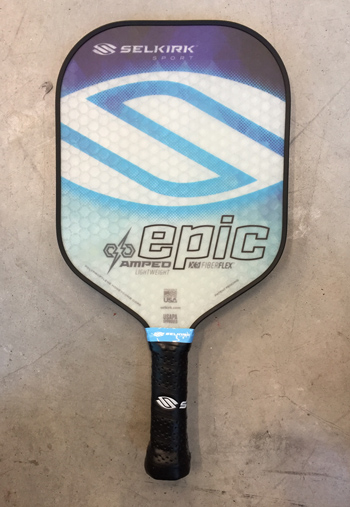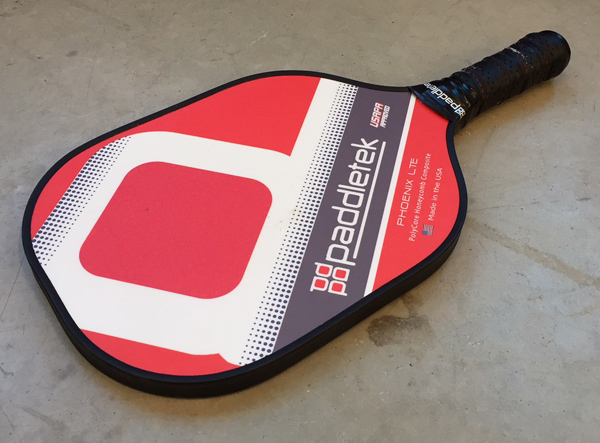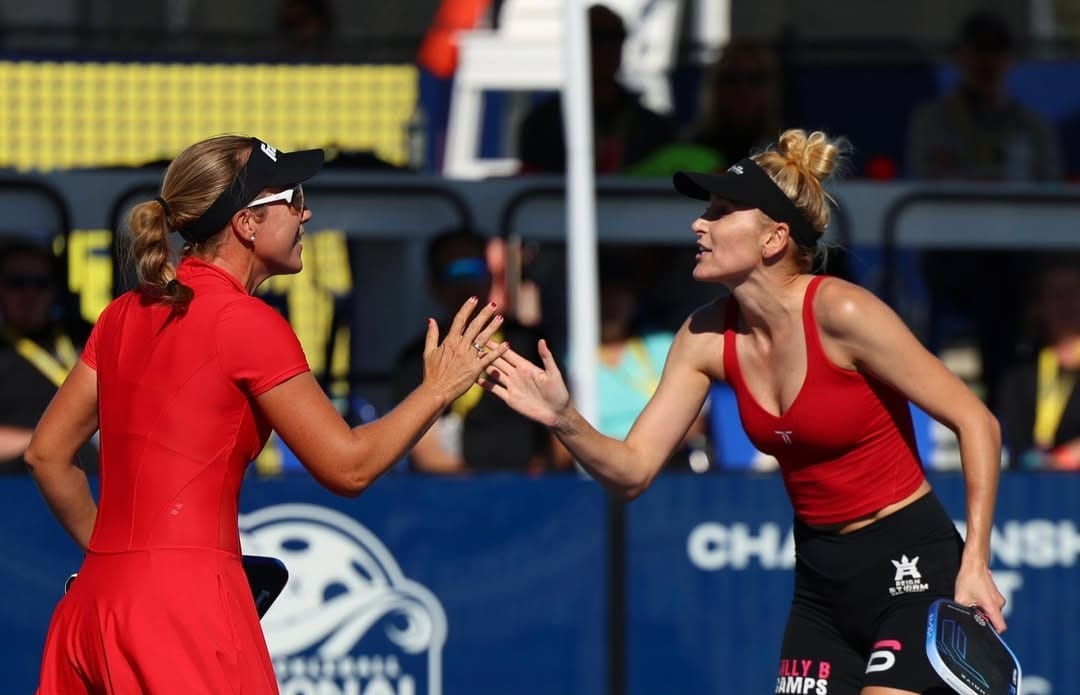Getting into a hobby for the first time as a beginner can be overwhelming. Sometimes, it feels like your head is spinning and money is spewing out of your pockets uncontrollably. But it doesn’t always have to be that way. Pickleball is in a unique position in that the sport isn’t that expensive and it’s also simple to learn. Today, I’m going to guide you through the process of getting started in pickleball as a complete beginner.
Keep in mind that most of what I’ll be writing about in this article has been talked about in more detail on other sections of the website. I’ll be linking these articles and pages through this one. So if you want to get more detail on a subject, just follow the links, and I’ll take care of the rest.
Let’s rock!
First, find someone you know
The easiest and most efficient way to get started in pickleball is to find someone you know who is really into it. It’s incredibly likely that they will do whatever they can to give you a healthy start to the sport. Trust me; Pickleball players are always searching for new players to play with.
Most of your beginner pickleball problems will be solved just by finding someone that can teach you the ropes. Rest assured, pickleball isn’t hard to learn. It’s just easier when you have a friend or family member there to help.
Furthermore, finding someone to play with means that you won’t have to buy a paddle right away. They will most likely have one available for you to use. If they don’t have an extra and the place you play at doesn’t have an extra, read on, and I’ll give you a few options for great beginner paddles.
If you can’t find someone that you know who plays pickleball, it’s not a big deal. You will just have to be a bit more picky about where you play. Finding a location that is good for beginners is going to be the best way to get started.
The basics of what you’ll need
If you can’t find someone that you know who can get you started, then I will be that person for you over the internet. I’m going to give you a basic rundown of what you’ll need. Later on in the article, I’ll be going over each topic in detail.
A pickleball paddle
The pickleball paddle is our tool of the trade. It’s the primary piece of equipment that you will own throughout your pickleball journey. It’s the centerpiece. We’ll go into more detail later, but I just want to give you some basics.
Pickleball paddles, similar to other sporting equipment, can be made up of different types of materials that do different things. Some manufacturers make paddles with plastic cores make them with aluminum cores. Others cover their paddles with fiberglass while some finish it with graphite.
There are a wide array of paddles to choose from. They typically range from $20 to $150 in price and have drastically different levels of construction quality. If you stick around on this website, I’ll show you everything you need to know about paddles and recommend the best ones for you.
Shoes
Oh boy, shoes. The topic of shoes is a vast and slightly controversial topic in the pickleball world. There is a consensus on what shoes are fine for pickleball, but there is still some debate going on about this.
Spoiler alert: open shoes, hiking boots, and swim shoes are not suitable for pickleball. Where things get foggy is with running shoes. A lot of people will start playing pickleball with their running shoes because it’s the most common type of sports shoe seen and it’s the most convenient. But this can be a disastrous choice. To avoid injury in pickleball, you will need sturdier shoes.
A place to play
There are a handful of ways to find local pickleball play locations. If you don’t know anyone that plays, then you’ll have to seek out some locations on your own. There are plenty of options available for you though, and most of them are inexpensive (another benefit of pickleball).
If you don’t know anyone, then your best option to is to head over to the USAPA website and search for locations. This is what most people use to find more places to play and what I personally recommend.
Basic game knowledge
If you’ve played any other kind of racket sport before whether it was tennis, ping pong or badminton you are already light years ahead. If you haven’t, don’t worry about it! Pickleball is easy to learn, and you will pick it up just by playing. There are plenty of beginner friendly pickleball locations out there as well that will help you learn the game.
Later on in the article, I’ll be giving you some general knowledge about racket sports. Also, I’ll talk about two major rules that you need to be aware of.
What you need to know about paddles
Now that you know the basics let’s go over each of them in greater detail.
It’s time to talk about the pickleball player’s primary tool, the paddle. If you can’t borrow a paddle from a friend or a pickleball location in your area, then you will need to buy one. First, let’s go over the different types of paddles.
Wooden Paddles
Wooden paddles saw a lot of use back in the 1960s when pickleball began. They continued in use until the mid-1980’s when composite paddles replaced them. But even though 99% of players use composite paddles, wooden paddles still see some use in pickleball today. The reason is that they are cheap.
Wooden paddles are notorious for being heavy. Some of these paddles can weigh up to 20 oz, which is a lot. Just for reference, the average composite paddle weight is around 7.5 oz.
I strongly recommend that you do not use wooden paddles. Don’t get me wrong; I’m thankful that wooden paddles were around to get pickleball off the ground, but they are very little use to us anymore. Wooden paddles are bulky, very heavy and because of these reasons are difficult to play with.
Like I said earlier, wooden paddles are also extremely cheap. We’re talking dirt cheap. If you need the most affordable option available, then you can go that route, but again, I don’t recommend it.
Composite paddles
A composite material forms when different individual elements combine into one object. Think about a ham sandwich. We could call a ham sandwich a composite object because you have the bread, ham, cheese (obviously pepper jack) and mustard that comes together to make a single, delicious sandwich.
Composite pickleball paddles are the same way but without the cheese. Well, unless you’re into that.

See the honeycomb pattern inside the paddle?
Composite paddles have three main components (excluding the handle):
- Core
- Face
- Edge guard
The core is what the majority of the paddle head consists of. There are different types of materials that are used for the core, but all of them have a honeycomb design. The honeycomb structure makes the paddle strong and durable, yet lightweight. And that’s exactly what we want!
If you want to discover the details about paddle cores, click here to read more.
The best paddle for beginners
I’ve said this many times before, but I don’t believe in a “beginner-only paddle.” There are certainly cheap paddles out there that you can choose from, but selecting a paddle as a beginner is more about what you should avoid, rather than what you should get. Here are some things you should avoid:
- Nomex and aluminum core paddles.
- Elongated or “blade” paddles. These are the skinny looking paddles.
- Avoid wooden paddles of any kind.
- Paddles that are under 6.5 oz, or over 9 oz.
As long as you avoid these types of paddles, you will be in a solid starting position.
At the time of this writing, I have two main recommendations for beginner paddles. One is a lightweight paddle, and the other is a high midweight paddle. Keep in mind that these are the highest quality options that I know of without breaking your wallet. These are the kinds of paddles that you could play with for a long time without upgrading to an advanced paddle.
If you want to see the entire list of paddles that I recommend you can check them out here.
Paddletek Phoenix LTE

This is one of the best beginner paddles around.
Specifications:
- Core: polymer
- Face: composite
- Average weight: ~7.1 oz
- Paddle length: 15 ¾”
- Paddle width: 7 ¾”
- Grip circumference: 4 ¼”
- Grip type: Gamma perforated ribbed
- Handle length: 4 ½”
- USAPA approved
At the time of this writing (I’ll keep this updated), this is the absolute best beginner paddle in my opinion. The Paddletek Phoenix LTE is an excellent option for beginners because it’s inexpensive relative to its quality. It’s not the cheapest paddle that you could buy, but it’s one of the best value picks.
I played with this paddle for many months before I switched to something else. It’s a great paddle, and I recommend it to most players. Here are some benefits:
- Lightweight and easy to use.
- Great for seniors and kids.
- Inexpensive.
- Very soft touch.
- Comes in a 2-paddle bundle with balls and bag.
The fact that this paddle is so inexpensive can’t be overstated. Unless money is no object, it’s important to not buy an expensive paddle at the start of your pickleball journey. You never know what’s going to happen in the future. The last thing you want is to realize a month from now that the $150 paddle isn’t working out or didn’t fit you at all.
The Phoenix LTE is also great for beginners because it’s specifically designed to be a soft paddle. In pickleball, when people say “soft” what they mean is that the ball will pop off the face in a much more gentle manner instead of it exploding off the face. This is the main reason why I recommend the Phoenix LTE to beginners. The paddle will teach you the most important aspects of pickleball. I also wrote a more in-depth review if you’d like to check that out.
The great thing about these inexpensive paddles is that often they come in bundles. You’ll see this a lot in pickleball. Since you have to have 2 or 4 players to play the game, manufacturers like to sell sets and bundles to make your life easier and reduce costs. If your spouse or friend is interested in playing with you, bundles are a great way to go.
The Phoenix LTE bundle comes with two paddles, a simple bag, and four balls. The balls probably won’t be the highest quality, but it’s not a huge deal for now.
But if you want to focus more on power than finesse, then let’s move onto the next paddle recommendation.
Selkirk NEO
Specifications:
Core: polymer
Face: composite
Average weight: ~7.8 oz
Paddle length: 15 ½ ”
Paddle width: 7 ⅝ ”
Grip circumference: 4”
Grip type: Gamma
Handle length: 4 ⅞ ”
USAPA approved
This the 2nd beginner paddle that I recommend. Selkirk is one of the leading pickleball manufacturers around. This paddle, the Selkirk NEO, was made many years ago, but it still holds its own as a great beginner paddle. Here are the benefits of this paddle:
- A bit cheaper than the Phoenix LTE.
- Upper midweight paddle gives you more power.
- Great for young people and strong players.
- Available in 2-paddle bundles with balls.
First things first, notice the weight difference between this paddle and the Phoenix LTE. The ~ .7 oz difference in weight is considerable. Just for reference, a 1 oz different in weight between paddles is enormous. So what does this mean?
Power.
The #1 factor for getting more power is using a paddle with more weight! The more weight the paddle has, the more force will be applied to the ball. If you want to smash the ball or if you just want to play a more aggressive game then the Selkirk NEO is for you. I’m not saying that the Selkirk NEO is heavy, it’s actually not. It’s just heavier than the Phoenix LTE.
Both of the paddle that I recommend here will give you a solid start to pickleball. But most importantly, it will give you a solid start without having to upgrade your paddle right away. These paddles will last you awhile before needing to be upgraded.
You could go cheaper
Like I said earlier, these paddles aren’t the absolute cheapest paddles on the market. From my experience, these are the best paddles to get you in the game without having to upgrade to a better paddle shortly after. It’s the most efficient way of getting started.
But you could go much cheaper. You will just have to deal with the extreme drop in quality. If you want to learn more about these options, head on over to this article and I’ll explain more.
Mind your feet!
Now that we’ve covered what to hold in your hands, let’s talk about what to have on your feet. What we choose to wear on our feet when we play pickleball is extremely important. In fact, a lot of this discussion can get pretty serious. Injuries and other health concerns can crop up when you play pickleball. When it comes to footwear, there are some things to keep in mind.
First, you will not be doing a lot of forward movements in pickleball. For the longest time, I heard people say things like “there is no running in pickleball.” I thought that was preposterous. But technically, it’s true. There is no running in pickleball. There’s just sprinting instead.
However, besides light jogging forward and walking, sprinting is the only forward movement you will see in pickleball and it doesn’t happen a lot.
So what kind of movements are the most common in pickleball?
Lateral movements.
Lateral movements are simply motions with your body that go side to side. There is a lot of this in pickleball. And it’s typically constant and very frantic. So if you don’t have the right type of shoe, you can roll your ankle or get shin splints and stress fractures. I’ve dealt with shin splints before and believe me; you don’t want to go there.
Considering this, I recommend a sturdy and reliable shoe for playing pickleball.
There are typically two types of pickleball locations that people play at. The highest quality pickleball locations are played on tennis court whether it’s indoors or outdoors. The other option is on a wooden surface in a gymnasium. This could be a basketball court or volleyball court. They’re both pretty much the same. It’s not uncommon to go to a pickleball location that has basketball, volleyball and pickleball lines drawn all over the court. For these gymnasium locations, wearing a sturdy court shoe is going to be your best bet.
Court shoes
Court shoes are a type of athletic shoe that is typically used for gymnasium sports such as basketball, volleyball, and our favorite, pickleball. Here’s what you’ll find in a court shoe:
- Court shoes have flat soles and have very little treading if any at all.
- Court shoes sometimes have a rubber or colorless sole to reduce scuffing.
- Have support on all sides similar to a tennis shoe.
- But often weighs less than a tennis shoe
Court shoes, similar to tennis shoes give you support on all sides of your shoe. This is great for the constant lateral you see in pickleball. They aren’t as heavy duty as tennis shoes, but they do the job.
As you’ve probably guessed, court shoes are best if you’re going to be playing a lot indoors and on a gymnasium floor. They will give you excellent traction on the floor due to the flat, rubber soles and will allow you to bounce side to side with ease.
Tennis shoes
Do you remember those cool looking shoes that you wore when you were a kid? Whenever it was time to go outside and play, you would put your shoes on, tie them up then run around for hours until completely exhausted. I remember doing this back in the 90’s. The other thing that I remember is that I called those shoes “tennis shoes.” But in reality, they weren’t tennis shoes; they were more like running shoes. Often, what we call tennis shoes aren’t tennis shoes.
Here are some common characteristics of tennis shoes:
- Very bulky on all sides of the shoe.
- Much heavier than other types of shoes.
- Bends near the toe, instead of in the middle.
- Extremely durable and tough.
Purchasing a pair of tennis shoes is going to be your best option for footwear. This is especially the case if you’re going to be playing on an actual tennis court. There’s no substitute in this case. Tennis court is very, very rough and textured. Sometimes I joke that It feels like running on sandpaper. If you’re going to be playing on a tennis court, your only option is to play with tennis shoes. Your legs will thank you later.
A quick word on running shoes
A lot of beginners will get started wearing running shoes instead of a proper court shoe. This is not a good idea. Running shoes are not “all purpose” footwear. They are specifically designed for running in a straight line with no side to side motion. To make the shoe lighter, the material is taken out of the sides of the shoe to make it lighter. This is terrible for pickleball. The lighter the running shoe is, the more likely you are to roll your ankle.
Don’t risk it. Get a solid pair of court or tennis shoes before you start playing. It’s smarter to pay $100 for a good pair of court or tennis shoes rather than a lot more over time at the physical therapist’s office.
Learning pickleball
Like I mentioned at the beginning of the article, learning pickleball isn’t too hard. It just takes time. Most people learn pickleball by osmosis. But the key is just to have fun. Take people’s advice while you play and you’ll get used to it. Don’t worry too much about the exact rules (more on that later.) Just try to enjoy yourself and focus on the fun aspects of pickleball. But there are a couple of useful things that you should know before you get out to the courts.
First, make sure you bring some water. It’s important to stay hydrated while playing pickleball. If you’ve done any other reading about pickleball before reading this article, then you’ve probably read that pickleball is easy on the body. To begin with, this is only partly true, but it doesn’t say anything about how worn out you can get. It can be exhausting.
There are two other things you should know which are specific rules.
Two important rules to know
There are two basic rules that you must know when you play pickleball. People will help you out on the courts, but it’s best to have these rules swimming around in your mind before heading out. Don’t worry if you mess up and forget about these rules. Even experienced players mess up on these sometimes!
The kitchen rule
This is one of the most notorious rules in pickleball. The kitchen (also called the non-volley zone) is a section of the court that is 7 feet from the net on each side. Here is the kitchen rule in a nutshell:
You cannot volley a ball while your feet are inside the kitchen, or if the momentum from you hitting a volley makes you step into the kitchen.
A volley is simply where you hit the ball in mid-air before the ball has bounced. If the ball bounces, you can safely step into the kitchen to hit it. But if it hasn’t hit the ground yet and you volley it while in the kitchen, then it’s a fault. Remember, this is only for volleys. If the ball has already bounced then you can be in the kitchen as much as you want.
The reason why this rule exists is so that people don’t stand at the net and just smash everything over. That would obviously be ridiculous. The kitchen rule stops this from happening.
The general strategy behind the kitchen is to put your feet 1-2 inches behind the kitchen line. When it’s time to volley a ball, make sure you force yourself not to step forward. It takes time to get used to, but it’s the best way to train yourself. Trust me, you will step forward into the kitchen many times and get a fault, but so do we all. I did it multiple times when I was a beginner.
The double bounce rule
This is another notorious rule that catches beginners all the time. Back when I was a beginner, this rule would get me at least a few times a match. It’s quite hilarious when someone messes up with the rule because it’s pretty easy to understand. Here’s the rule:
The double bounce rule means that the ball must bounce once after the serve and return serve.
What this means is that when someone serves the ball, the return server cannot hit it out of mid-air (volley). Also, when the return server hits it back over to the serving team, they also cannot hit it out of mid-air. Hence, the name “double bounce rule.” It must bounce on each side once before any volleys can begin.
Pretty simple, right? My past pickleball beginner self would disagree.
This one can be pretty hard to get used to because it’s easy to forget. It’s also very tempting to hit balls in the air. The best way to avoid this mistake is to consciously remind yourself not to step too far forward when you or your partner serve the ball. Staying back in the court will help you to not volley the ball.
In conclusion
I hope this guide has helped you get more comfortable with pickleball. When starting out in pickleball, just try to have fun and enjoy yourself. All of the minute details will reveal themselves over time and you’ll be able to tackle them one-by-one. Have you recently gotten started in pickleball? Let me know in the comments what your experience has been!
Anuncie Aqui / Advertise Here
Sua marca para o mundo Pickleball! / Your brand for the Pickleball world!

 English
English  Spanish
Spanish  Portuguese
Portuguese  German
German  Italian
Italian  Japanese
Japanese  French
French  Polish
Polish  Russian
Russian  Netherlands
Netherlands  Hungarian
Hungarian  Turkish
Turkish  Videos
Videos  Pickleball Kitchen
Pickleball Kitchen








 English (US) ·
English (US) ·  Portuguese (BR) ·
Portuguese (BR) ·